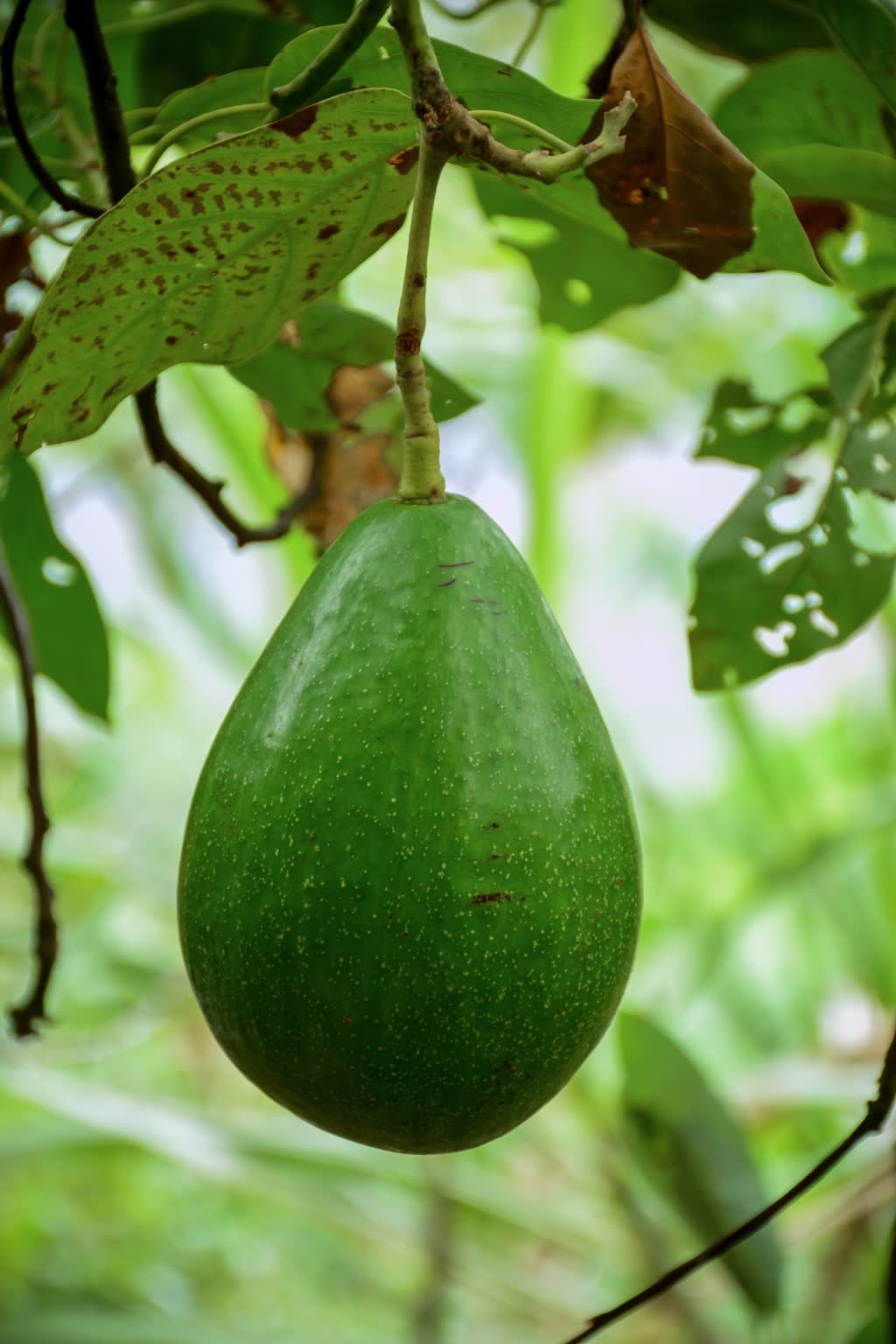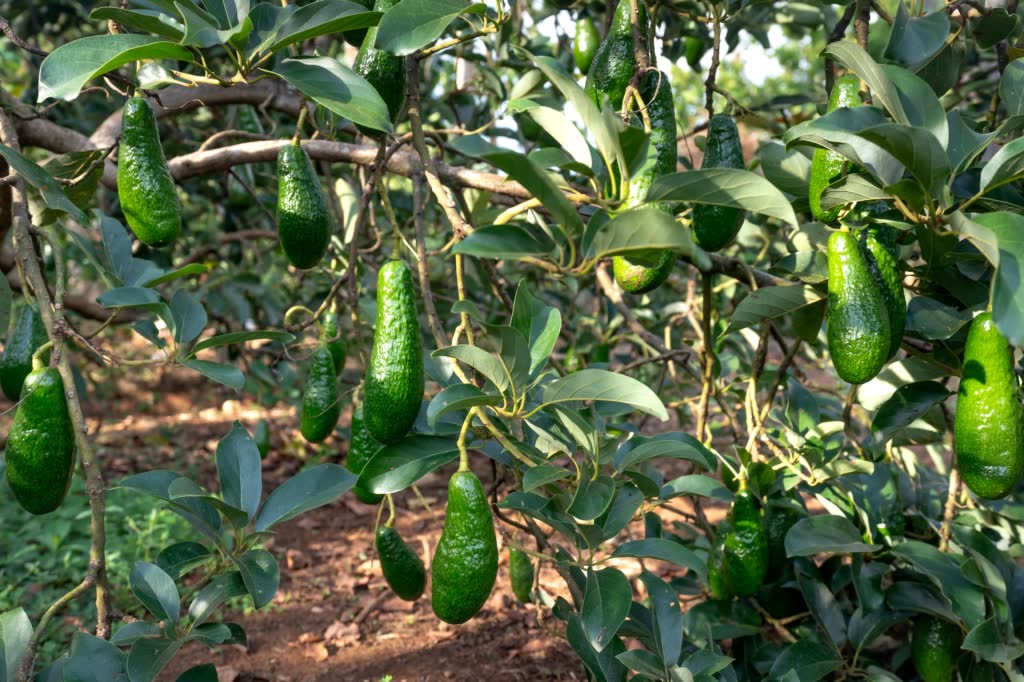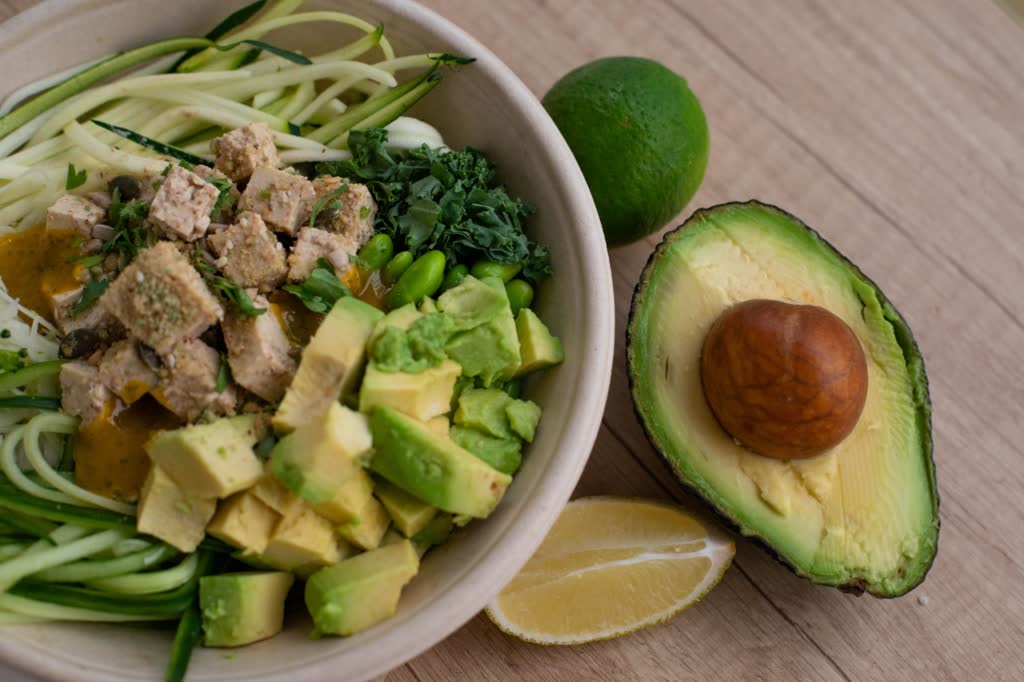
Avocados, with their creamy texture and rich flavour, have gained popularity in recent years. If you have the space available in your own garden, I would recommend that you consider growing an avocado tree - home grown is always much better than store bought!
While avocado trees require some patience and specific conditions to thrive, the satisfaction of nurturing your own avocado plant and enjoying its bountiful harvest is truly rewarding. The following information will help you grow your own avocado trees, and during the appropriate time of the year; enjoy a wonderful harvest.
Choosing the Right Variety
Avocado trees come in various varieties, each with its own unique characteristics. When selecting a variety, consider factors such as climate suitability, tree size, and fruit characteristics. Some popular avocado varieties for home cultivation include in various conditions include:
Subtropical or tropical Climates:
Hass: The Hass avocado is one of the most popular and widely cultivated varieties worldwide. It produces small to medium-sized fruits with a rich, creamy texture and a nutty flavor. Hass avocados are known for their dark, pebbled skin that turns purplish-black when ripe.
Fuerte: The Fuerte avocado is another popular variety, particularly in tropical and subtropical areas. It is a medium to large fruit with a smooth, green skin. The flesh is pale green, creamy, and has a slightly nutty taste. Fuerte avocados are known for their high oil content and are great for both eating and guacamole.
Reed: The Reed avocado is a large-sized variety with a smooth, green skin that remains green even when fully ripe. It has a creamy, buttery texture and a mild, nutty flavor. Reed avocados are well-suited to tropical and subtropical climates and are known for their ability to withstand heat and humidity.
Cooler Climates:
Bacon: The Bacon avocado is known for its cold hardiness and can tolerate temperatures as low as 25°F (-4°C). It produces medium-sized fruits with a smooth, green skin. The flesh is pale yellow and has a mild, buttery flavor. Bacon avocados are an excellent choice for cool coastal regions and can even handle some frost.
Zutano: Zutano avocados are moderately cold-tolerant and can withstand temperatures as low as 26°F (-3°C). They produce medium to large-sized fruits with a thick, green skin. The flesh is pale green, creamy, and has a mild flavor. Zutano avocados are often used for their early-season fruit production and their ability to handle cooler climates.
Gwen: While Gwen avocados are primarily suited for tropical and subtropical regions, they have shown some tolerance to cooler temperatures. They can handle temperatures as low as 28°F (-2°C). Gwen avocados produce medium to large-sized fruits with a thin, glossy, green skin. The flesh is pale green, creamy, and has a rich, buttery flavour.
Climate and Growing Conditions
Avocado trees thrive in warm subtropical or tropical climates, although as mentioned above, there are some varieties that are tolerant of cooler climates. They mostly require a frost-free environment and do best in regions with mild winters and long, warm summers. The ideal temperature range for most avocado growth is between 60°F (15°C) and 85°F (29°C). Additionally, avocados need well-drained soil, as they are very sensitive to water logging.

Plant Avocado Seed or a Grafted Plant?
There are two common methods of growing avocados: planting a seed or grafting. Planting a seed can be an enjoyable experiment, but keep in mind that the resulting tree may not produce fruit true to its parent plant. For a more reliable option, consider purchasing a grafted avocado tree from a nursery. Grafted trees are clones of a parent tree known for its fruit quality and characteristics.
Soil Preparation
Avocado trees thrive in well-drained soil with a slightly acidic to neutral pH (6.0 to 7.0). Before planting, prepare the soil by incorporating organic matter such as compost or well-rotted manure to improve fertility and drainage. Ensure the planting area is free from competing weeds or grass.
Planting and Care
As highlighted above, avocado trees are very sensitive to wet soil - the soil must be well draining. I would highly recommend that if you have any doubts about the drainage of the soil that you mound up the tree on top of the ground - sit the plant on cleared soil and and build the soil up around the root ball of the plant.
If the soil is very well draining, the following guide will help you plant and care for your new avocado tree:
- Dig a hole that is wider and deeper than the root ball of the tree.
- Gently remove the tree from its container, taking care not to damage the roots.
- Place the tree in the hole, ensuring that the soil line matches the level of the nursery container (but remember what I said before about drainage).
- Backfill the hole with soil, gently firming it around the roots.
- Create a shallow basin around the tree to retain water.
- Water the newly planted tree thoroughly and provide regular watering to keep the soil moist but not waterlogged.
- Mulch around the tree with organic materials to help retain soil moisture and suppress weeds.
- Prune the tree to maintain a manageable size and shape, removing any dead or damaged branches.
- For the first year, remove any flowers that form - this helps to promote strong root development
- Ensure that any growth that forms below the graft point is removed.
Fertilising
Avocado trees benefit from regular fertilising to ensure healthy growth and fruit production. Use a balanced fertiliser specifically formulated for avocados or fruit trees. Avoid over-fertilising, as excessive nitrogen can lead to leafy growth at the expense of fruit production.

Sunlight and Protection
Avocado trees require full sun exposure to thrive and produce abundant fruit. Choose a sunny location in your garden that receives at least 6-8 hours of direct sunlight each day. Protect young trees from harsh winds and provide shade during scorching summers, especially in hot climates, to prevent leaf burn.
Pest and Disease Management
Avocado trees can be susceptible to pests such as scale insects, mites, and borers. Regularly inspect your tree for signs of infestation and take appropriate measures, such as applying organic insecticides or using integrated pest management techniques. Additionally, keep an eye out for common diseases like root rot and anthracnose. Proper irrigation practices, good drainage, and overall tree health are essential in preventing these issues.
Patience and Harvesting
Growing avocados requires patience, as it can take several years for a young tree to reach maturity and produce fruit. Avocado trees typically take 3-4 years or longer to bear fruit, depending on the variety and growing conditions. Once the fruit is mature, it will take several months to ripen. Harvest avocados when they reach the desired size and colour, usually by gently twisting or cutting them from the tree.

Typically, avocados do not ripen on the tree. They will usually ripen several days to a couple of weeks after harvesting or falling off the tree.
What time of year will avocado tree produce fruit
Avocado trees typically produce fruit once a year, although the exact timing can vary depending on the variety, growing conditions, and climate. In general, avocado trees tend to bear fruit in the late winter to early spring, with the harvest season extending into the summer months. However, it's important to note that the fruit development and ripening process can take several months. Avocado trees require warm temperatures and sufficient sunlight to initiate and sustain fruit production. It's also worth mentioning that young avocado trees may take a few years to reach maturity and start bearing fruit, so patience is key when growing avocados.
Frequently Asked Questions (FAQs)
Yes, you can grow avocados from the pit of a store-bought avocado. However, it's important to note that the resulting tree may not produce fruit true to its parent plant. Growing avocados from pits can be a fun experiment, but for reliable fruit production, it is recommended to purchase a grafted avocado tree from a nursery.
Avocado trees typically take 3-4 years or longer to bear fruit, depending on various factors such as the variety, growing conditions, and tree health. Patience is required when growing avocados as they have a longer maturation period compared to some other fruit trees.
Avocado trees prefer consistent moisture but should not be overwatered. Watering frequency depends on factors such as climate, soil type, and tree size. As a general guideline, water deeply once or twice a week, allowing the soil to dry out slightly between waterings. Adjust watering frequency based on weather conditions and monitor the moisture level of the soil.
Avocado trees benefit from a balanced fertilizer specifically formulated for fruit trees or avocados. Look for a fertilizer with a ratio of nitrogen (N), phosphorus (P), and potassium (K) such as 10-10-10 or 12-6-6. Follow the manufacturer's instructions for application rates and timing. Avoid excessive nitrogen, as it can lead to excessive vegetative growth.
Avocado trees benefit from pruning to maintain a manageable size and shape, improve air circulation, and remove dead or damaged branches. Pruning can be done during the dormant season to stimulate new growth. However, excessive pruning can reduce fruit production, so it's important to strike a balance.
Common pests that can affect avocado trees include scale insects, mites, and borers. Regularly inspect your tree for signs of infestation and take appropriate measures, such as applying organic insecticides or using integrated pest management techniques. Diseases such as root rot and anthracnose can also occur. Proper irrigation practices, good drainage, and overall tree health are crucial in preventing these issues.
Yes, avocados can be grown in containers, especially dwarf or semi-dwarf varieties. Choose a large container with good drainage, use a well-draining potting mix, and provide ample sunlight. Container-grown avocados may require more frequent watering and fertilization compared to those planted in the ground. Pruning and root pruning may also be necessary to manage the size of the tree.
Most avocado varieties are self-pollinating, meaning they do not require cross-pollination to set fruit. However, some varieties may benefit from cross-pollination, resulting in increased fruit production. If you have space, consider planting two compatible avocado varieties for better pollination and potentially higher yields.
Avocados are typically harvested when they reach the desired size and colour. The skin colour may change as the fruit ripens, but this varies depending on the variety. To check if an avocado is ripe, gently press the skin near the stem end. If it gives slightly and feels slightly soft, it is likely ready to be harvested. Avoid letting avocados become too soft on the tree, as they may become overripe and drop prematurely.
Growing avocados at home is very rewarding for the gardener. With the right variety, proper climate, and care, you can cultivate a thriving avocado tree that produces delicious, homegrown fruit. But remember, patience is needed; but it will be rewarded.
Suggested Videos
I am an educator and passionate gardener and traveler. Throughout my adult life, gardening has been my passion, therapy, drive and source of purpose. Even as a child I had an intrinsic interest in plants and a desire to understand what makes them grow.
I distinctly remember the moment this began - my family was on one of our regular road trips from Hervey Bay; Australia. We were driving past a field of sugar cane. Dad pulled the car over and we cut a couple of sugar cane stems and brought them home for a treat. To be honest, I didn’t really like the taste, but I did want to try and grow it; and that is exactly what I did. It was then that my fascination, interest and passion for gardening and understanding plants began.
Fast forward a few years and I studied biological sciences and began what would be a 36 year career as a Biology educator. From this, I don’t only love gardening, but I also love helping others learn about gardening. I am also always looking for new ways to develop my own gardening knowledge. I like to think I am truly a life-long learner.
Fundamental to my beliefs about education is that learning is often best done as a part of a community - learning from others, and helping others to learn. It is this type of community that I hope iCultivate will be for its members - a community of gardeners, keen to share their gardening knowledge and wanting to learn about new ways to garden - a community built on the love of gardening.











Get involved!
Comments